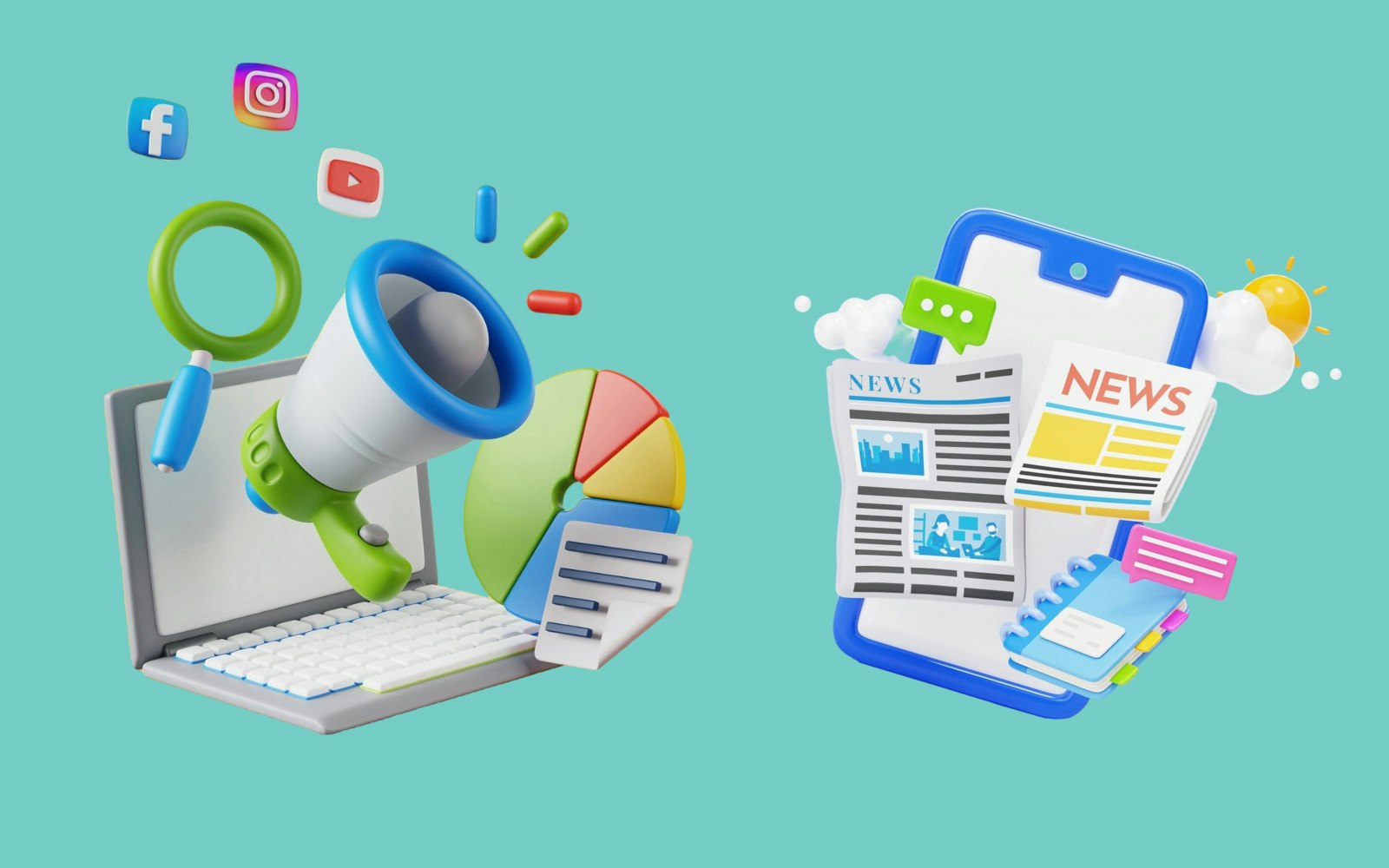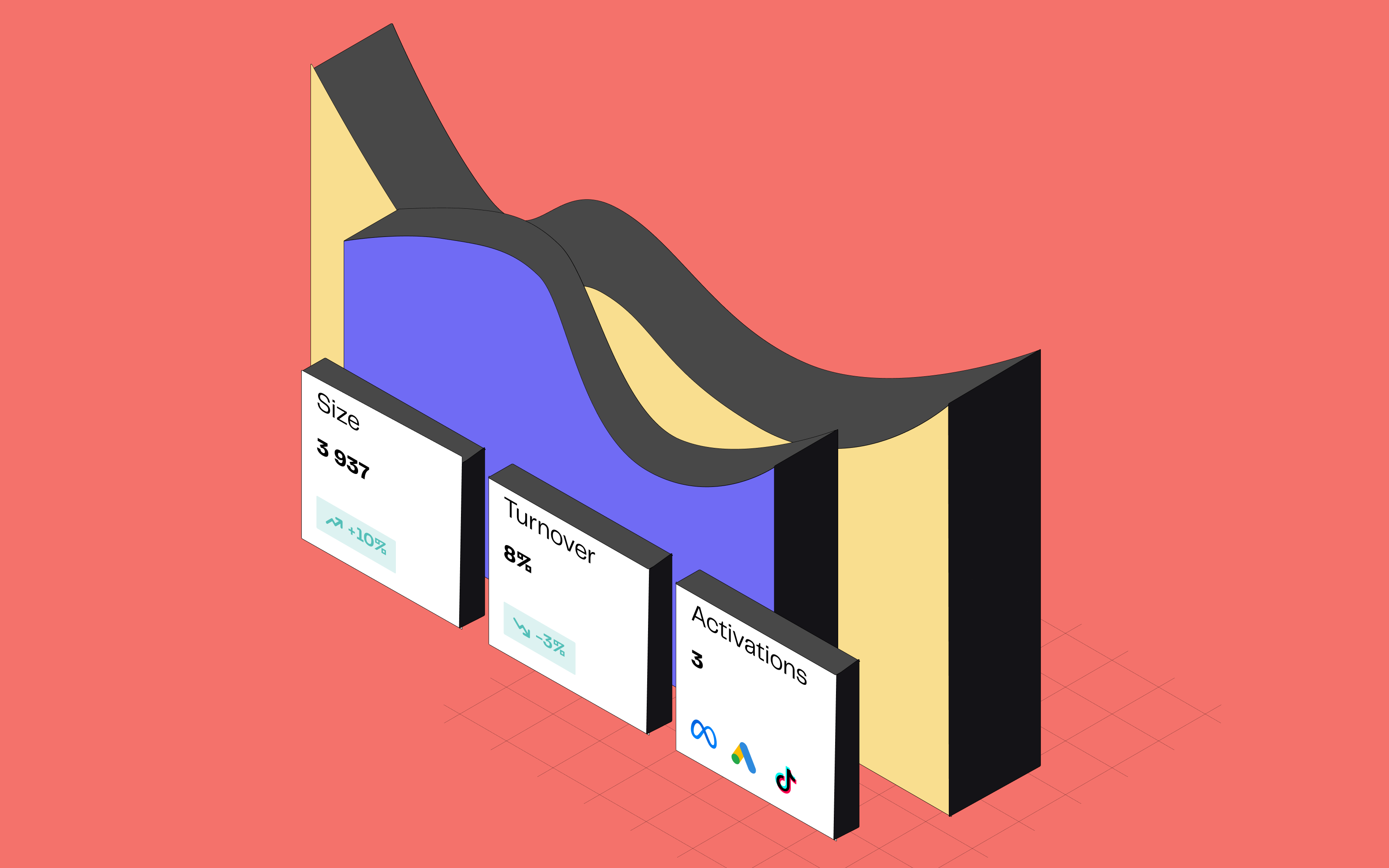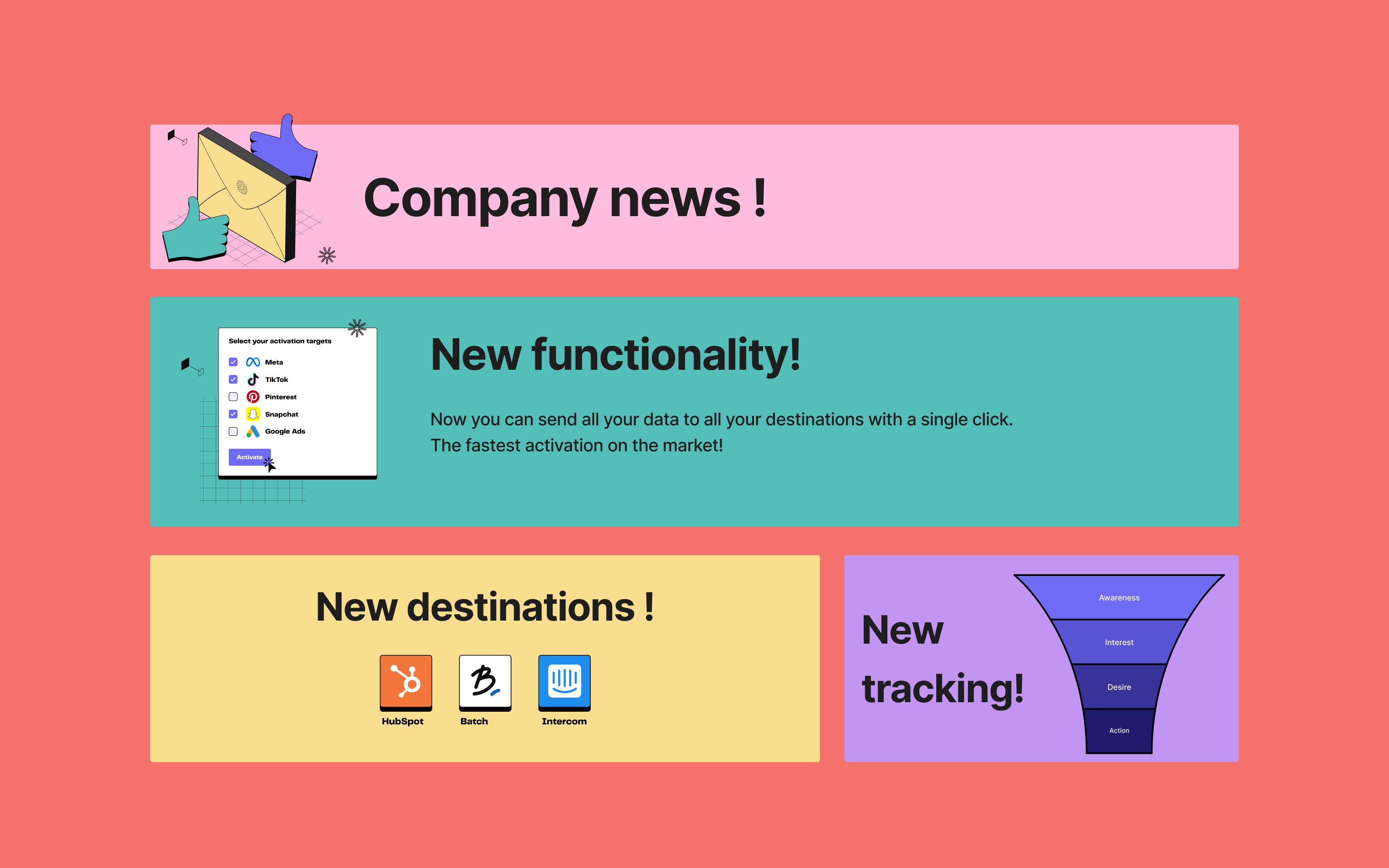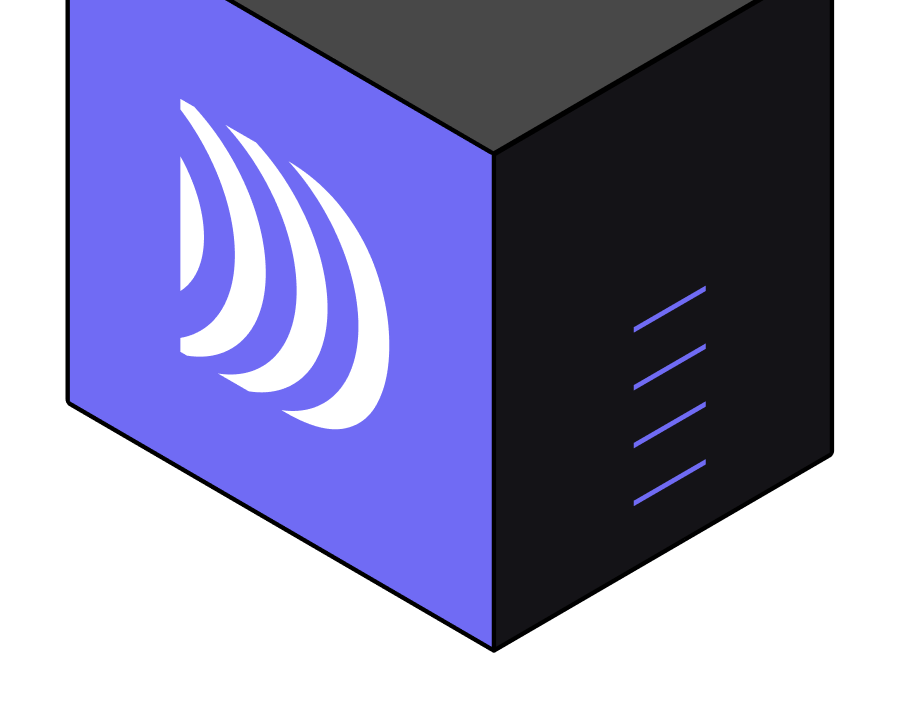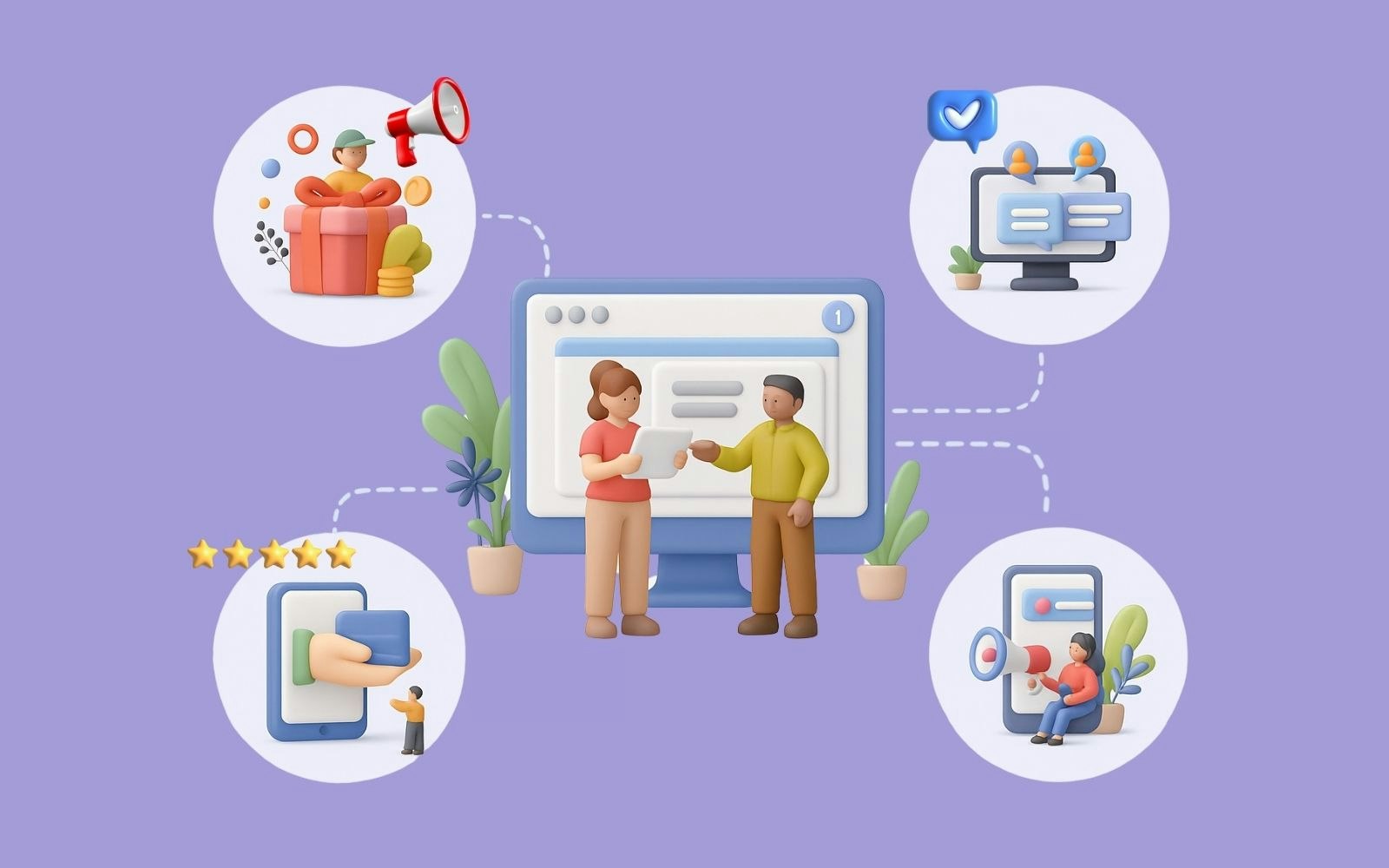
Adopting the PESO model for your communication strategy
7min • Last updated on May 16, 2025

Olivier Renard
Content & SEO Manager
Search marketing is undergoing a major transformation. To remain visible, a brand must appear not only on Google, but also within generative AI results and across social media platforms.
According to various studies, two in five internet users have already used TikTok to search for information. As for ChatGPT, it records up to 37 million queries per day (SparkToro).
This new paradigm has consequences for audience strategies. To stand out, brands must work on their content, distribution, and reputation within a 360-degree approach.
Key takeaways:
The PESO model organises marketing channels into four categories: Paid, Earned, Shared, and Owned media.
It helps brands activate the right levers based on their targets and objectives: visibility, acquisition, loyalty.
Each media type has its strengths: building brand awareness, creating engagement, reinforcing trust, or improving customer relations.
The PESO model offers a framework to build a comprehensive approach. Data plays a central role in guiding actions, measuring impact, and optimising overall performance.
👉 Discover the four pillars of the PESO model and how they work together to boost your brand’s visibility across all channels. Learn how to harness each lever to build a consistent and effective marketing approach. 🎯
What is the PESO Model?
The PESO model is a reference framework used to categorise marketing channels into four major types: Paid, Earned, Shared, or Owned media.
This framework was defined in 2014 by Gini Dietrich, a communication expert and founder of the Arment Dietrich agency. Her goal: to help brands structure their communications in a more digital, fragmented, and complex environment.
💡 PESO vs. POEM: What’s the difference?
The POEM model (Paid, Owned, Earned Media) is older. It does not take into account social media and user-generated content.
PESO includes this essential ‘Shared’ dimension, which is now critical to current strategies.
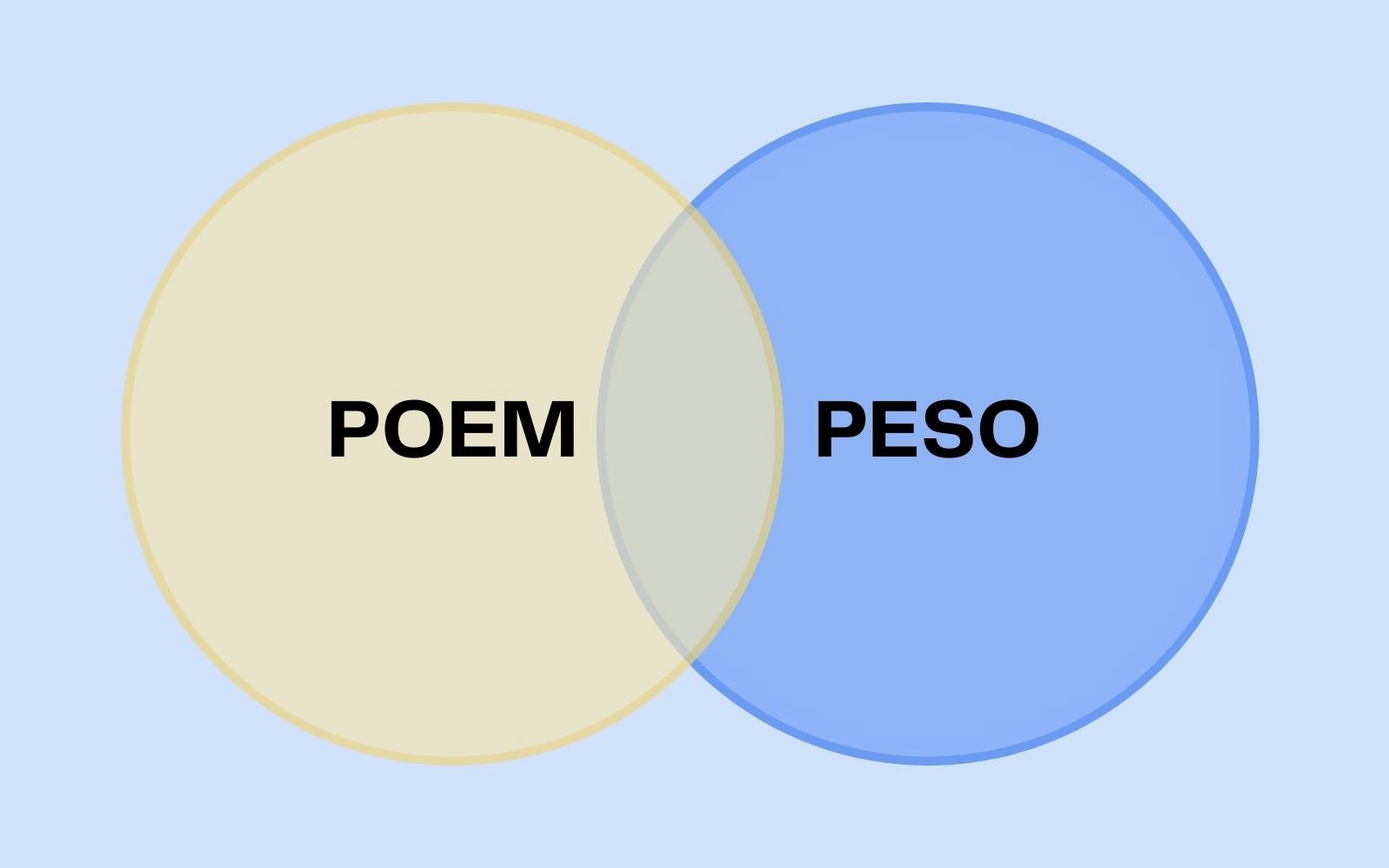
POEM vs PESO
With the rise of digital, communication channels have multiplied: press relations, social networks, online advertising, branded content… It's become increasingly difficult to orchestrate everything without a unified vision.
The PESO model addresses this need by offering a clear structure. It aligns marketing and communication actions to reach consumers where they are.
It's a straightforward concept to organise your levers, allocate resources effectively, and maximise the impact of your campaigns.
A four-pillar model
The PESO model is based on four main channel types. Each has its benefits, limitations, and performance indicators.
The goal is to combine them to build a balanced and efficient marketing strategy.
1️⃣ Paid media
These are advertising activities funded by the brand to gain visibility quickly.
Examples: Search Ads campaigns, Instagram sponsorships, paid influencer partnerships, certain email or outbound campaigns, adverts in traditional media.
Benefits: Immediate distribution, precise targeting, message control.
Limitations: Significant budget required, dependence on platforms and algorithms.
KPIs to track: Cost per Click (CPC), Return on Ad Spend (ROAS), number of impressions.
2️⃣ Earned media: gained visibility
These are contents spontaneously generated by third parties, in reaction to a brand’s action or reputation. They are excellent trust indicators.
Examples: Press coverage, positive customer reviews, natural backlinks, organic shares on social media.
Benefits: High credibility, viral effect, impact on brand awareness.
Limitations: Limited control over the message, uncertain results.
KPIs to track: Number of backlinks, press mentions, social platform shares.
3️⃣ Shared media
This pillar refers to content distributed via social or community platforms (Facebook, LinkedIn, Reddit, Quora), where interaction is key. It includes post sharing, likes, comments, and mentions.
Examples: Social media posts, retweets, user-generated content (UGC), forums or discussion groups.
Benefits: High engagement, amplification through word of mouth, direct connection with the community.
Limitations: Dependence on algorithms, risk of bad buzz, difficulty controlling spread.
KPIs to track: Organic reach, engagement rate, number of mentions or comments.
4️⃣ Owned media
Owned media refers to communication channels created and controlled by the brand. These channels allow for long-term audience relationships and quality content.
Examples: Website, blog, newsletter, podcast, YouTube or TikTok videos, mobile app.
Benefits: Full control over content and distribution, sustainability, improved SEO impact.
Limitations: Time and resources required, slower results.
KPIs to track: Web traffic, conversion rate, average session duration, newsletter subscriptions.
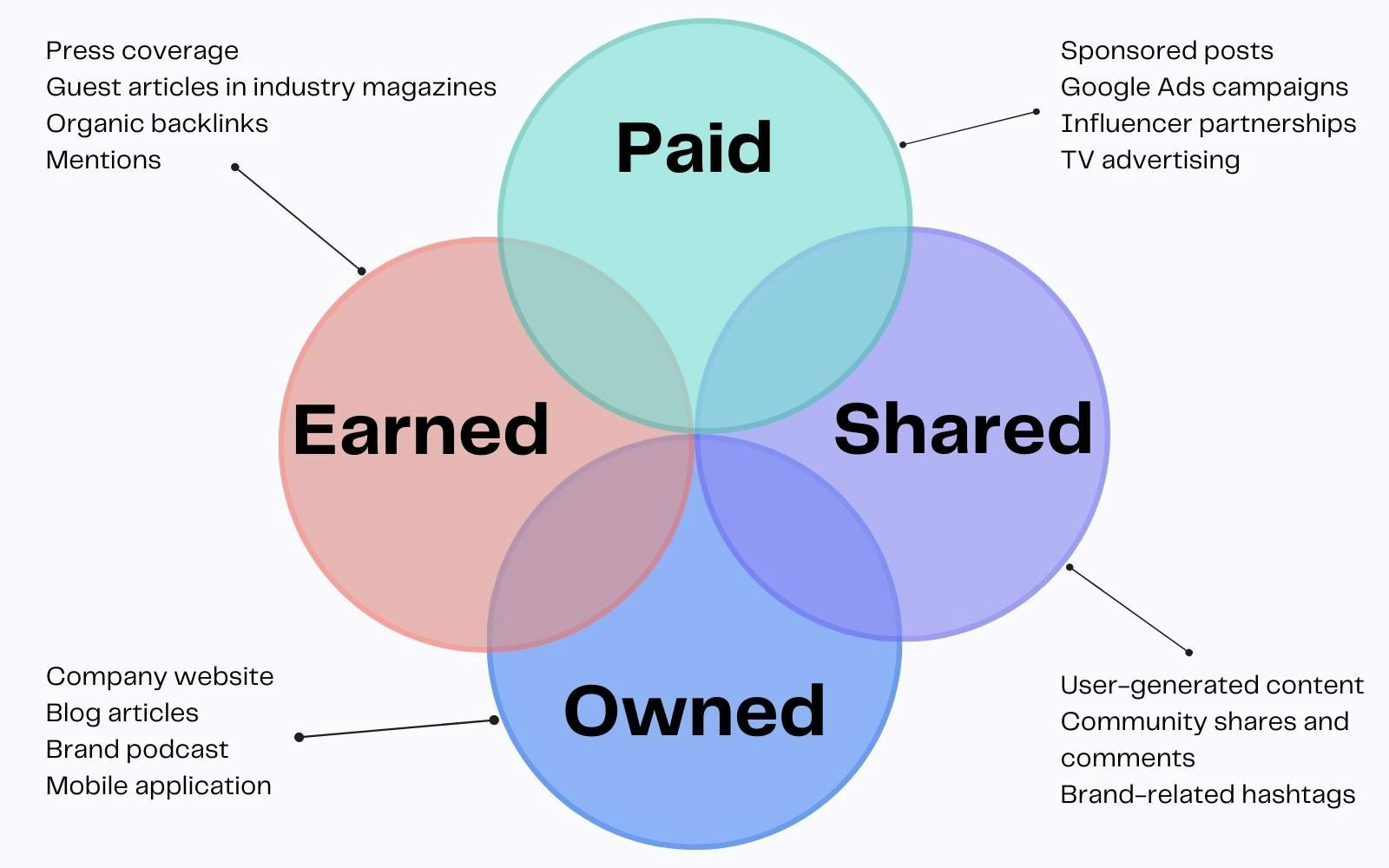
PESO Model
How to combine Paid, Earned, Shared and Owned in a marketing strategy
Complementarity of channels
As you've gathered, the four PESO pillars do not function in isolation. Each brings value, but it is their combination that creates a truly effective strategy.
Imagine a retailer launching a new collection on their e-commerce site (Owned media). They launch ad campaigns on Instagram and Google Ads to generate traffic (Paid).
Specialist media and influencers pick up the news (Earned), while customers share their purchases and reviews on social media (Shared).
💡 In 2012, Airbnb launched its Neighbourhood Guides to help travellers explore neighbourhoods authentically. This owned content was widely shared and relayed, showcasing a well-orchestrated PESO strategy.
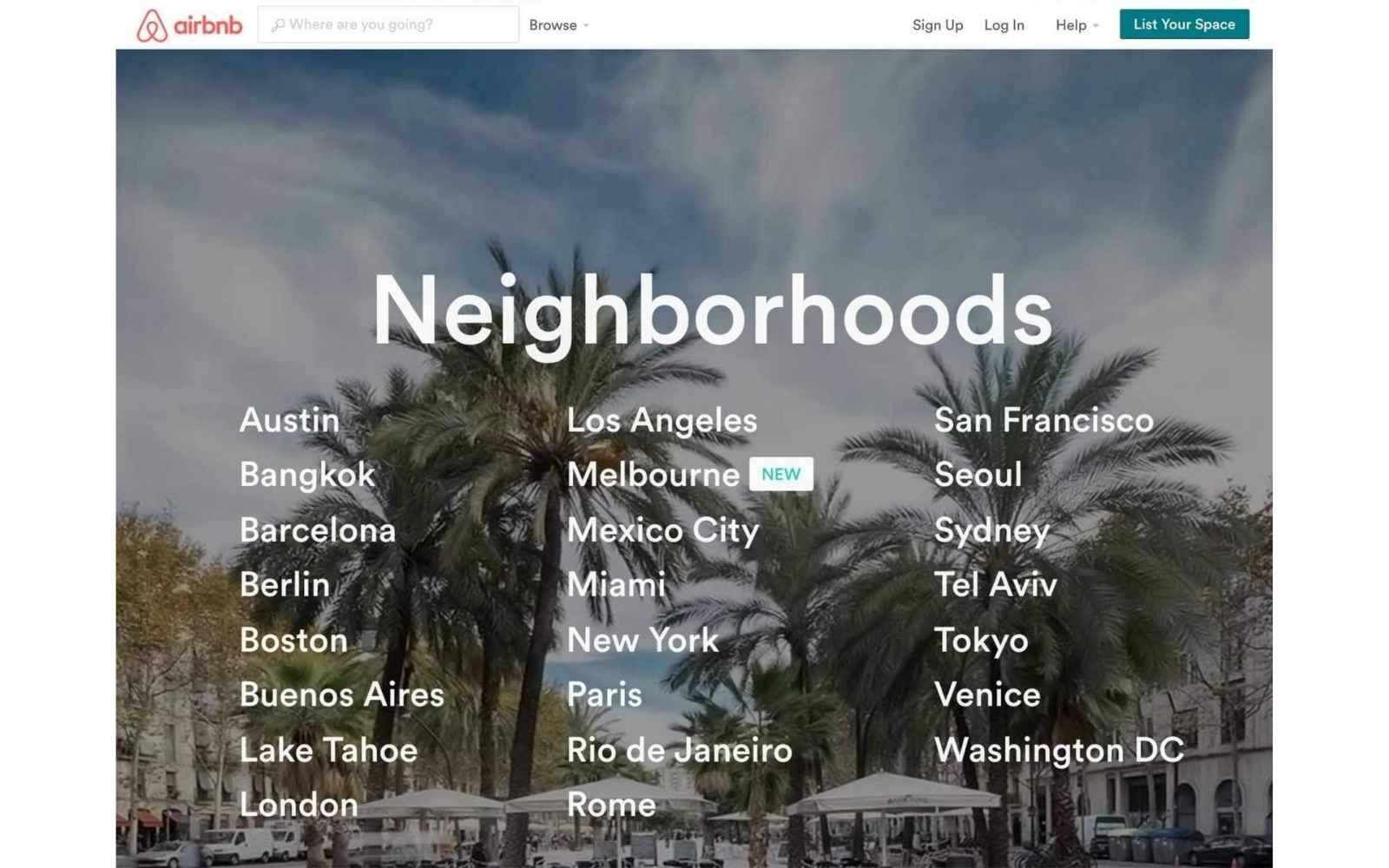
Neighborhood Guides (Credit: Airbnb)
Progressive implementation
No need to activate all levers simultaneously. What matters most is coordination and consistency between the media types. The strategy can evolve based on brand maturity, resources, and objectives.
Owned channels (website, blog, newsletter) serve as solid and sustainable foundations. It’s often recommended to set them up from the start.
Then come Shared channels to build community momentum. Followed by Earned media, as the brand gains authority. Finally, Paid media amplifies what already works.
💡 More than ever, Earned and Shared media amplify Owned. Google's NavBoost algorithm rewards resources that generate clicks, engagement, and interaction. In an inbound approach, promoting content also improves SEO.
Aligning PESO with marketing performance
The PESO model helps align content, channels, and objectives. It works well with other marketing frameworks (e.g. AARRR or TOFU / MOFU / BOFU*).
A growing B2B brand won’t have the same priorities as a DNVB launching a new product. Each pillar addresses a key stage of the customer journey. Do you want to…
Increase awareness? → Owned or Paid channels are often used at the top of the funnel.
Improve retention? → Earned and Shared content builds trust in the middle of the journey.
Boost conversions? → Data activation and retargeting (Paid) can help.
PESO thus supports a consistent, performance-oriented strategy. Data plays a central role in maximising the impact of every action.
👇
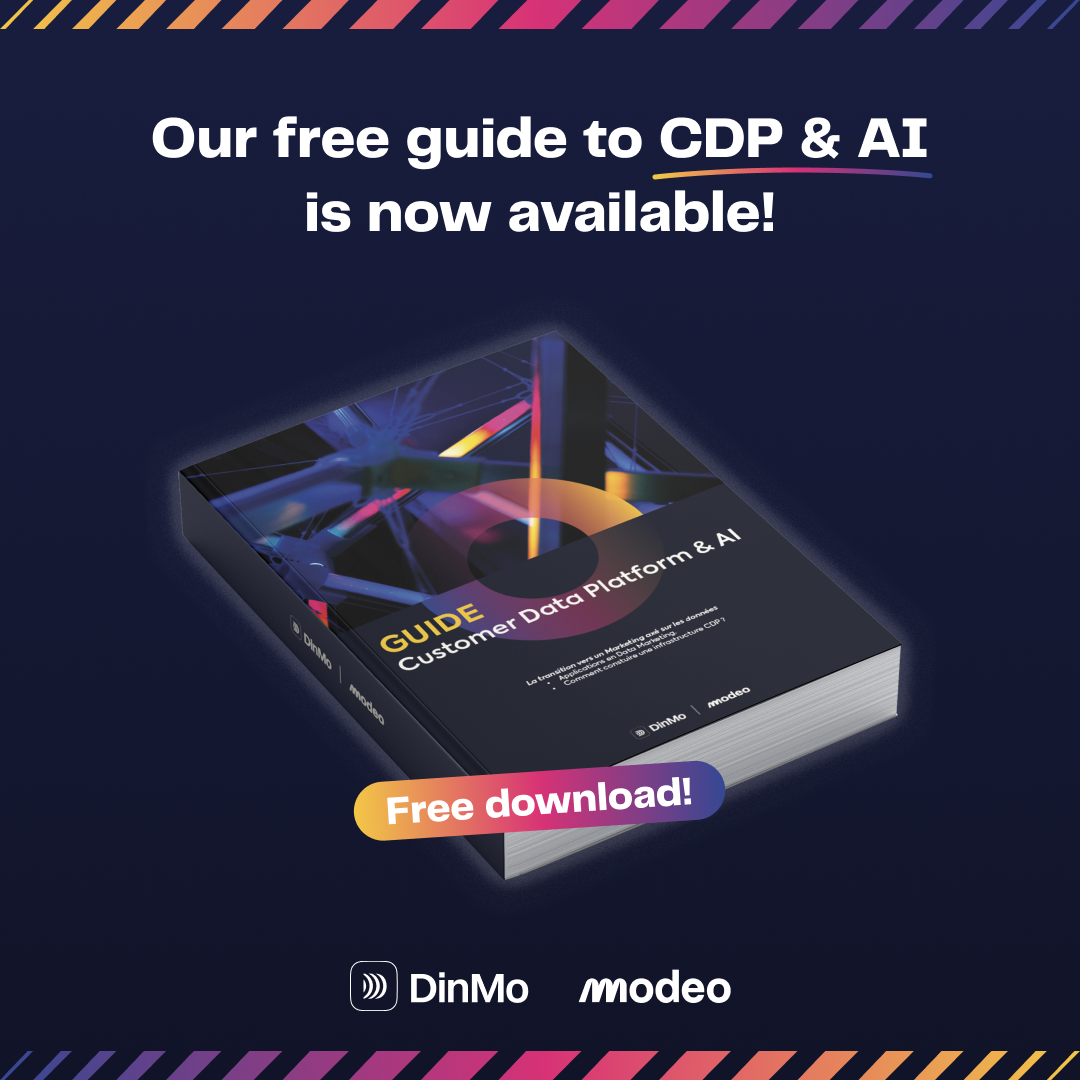
The complete guide to CDP
The role of data in PESO effectiveness
Why is a data-driven approach essential?
Data is central to a PESO strategy. It enables you to track, measure, and improve each lever.
These insights are invaluable for performance management: which channel drives the most engagement? Which Paid campaigns deliver the best ROI? Which Owned resources perform well and generate shares or press coverage?
💡 Example: A SaaS brand publishes a customer testimonial on its blog (Owned). The article gets a positive response. It’s then turned into a video snippet, shared on social media (Shared), and featured in a newsletter and press article (Earned).
More targeted content for a personalised experience
Brands collect vast amounts of first-party data during customer interactions. These come from websites, CRMs, newsletters, or social platforms.
Beyond analysis, this data lets brands deliver the right content, at the right time, on the right channel, to the right audience. Thanks to fine-grained segmentation, brands can personalise Paid campaigns based on interests or engagement level.
DinMo’s CDP facilitates data segmentation and activation around a unified customer profile.
The company can then sync audiences with business tools (CRM, ad platforms, etc.) to maximise the impact of every action.
Cross-referencing data helps you understand what works. Data strengthens alignment, coherence, and turns PESO into a genuine performance engine.
Tips for implementing a PESO strategy
Key steps
Map your current channels: What content do you own? What levers are currently active?
Use this overview to spot imbalances: too much Paid? Not enough Owned? Or perhaps a lack of Shared interactions?
Align your messaging, teams, and tools. A single piece of content can serve several goals if well distributed and part of a global plan.
Make sure the strategy is understood and embraced by each department.
Track precise indicators (traffic, engagement, conversion, ROAS…). Test, adjust, iterate. PESO adapts to your targets, campaigns, and market shifts.
What tools should you use?
Right from the start, equip yourself with the right tools to manage your actions and measure performance across each pillar.
Use web analytics tools to track Owned channel performance.
The most famous is of course Google Analytics, but there are several alternatives: Matomo, Amplitude, Piano, or Microsoft Clarity.
A CRM to manage customer relationships and link marketing data.
Ad platforms (Meta, Google, Bing Ads…) for Paid.
A PR or media monitoring tool like Cision or Meltwater for Earned.
In social listening, tools like Hootsuite or Buffer to plan and analyse Shared actions.
A Customer Data Platform (CDP) to unify data and activate segments across all channels. DinMo integrates directly with your data stack via a modular approach.
Dashboards (e.g. Looker Studio) to monitor the overall performance of your actions.
Conclusion
The PESO model offers a clear framework for organising marketing channels, aligning messaging, and maximising campaign impact. By linking content, distribution, and measurement, it brings greater consistency, performance, and agility.
With a data-driven approach, brands can better target, engage, and convert.
👉 Discover how DinMo helps marketing teams harness their data and activate the right levers, at the right time.
*AARRR: Acquisition, Activation, Retention, Recommendation and Revenue. TOFU / MOFU / BOFU: Top, Middle, Bottom of Funnel

















